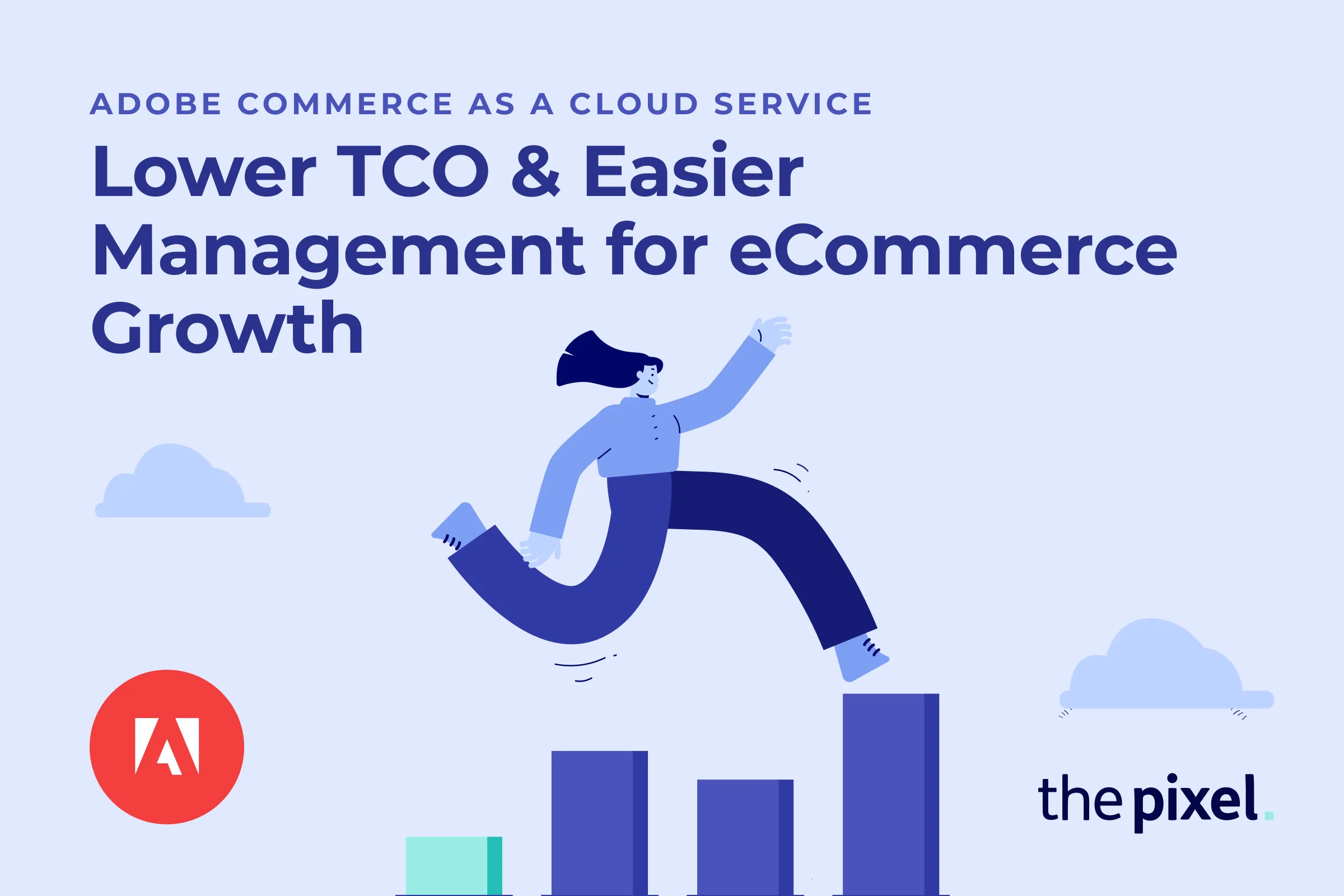At Adobe Summit, Adobe announced a major shift in how businesses run their eCommerce platforms: Adobe Commerce is becoming a Cloud-Native Service.
This transformation isn’t just about speed, AI, and scalability—it’s also about reducing the long-term costs of running an eCommerce business.
One of the biggest barriers to growth in digital commerce has always been the cost and complexity of managing an eCommerce platform. Maintaining infrastructure, handling upgrades, troubleshooting performance issues, and integrating multiple third-party tools can drain IT budgets and slow innovation.
Now, Adobe Commerce as a Cloud Service is designed to solve that.
At The Pixel, we’ve worked with businesses struggling with high maintenance costs, expensive upgrade projects, and complex integrations. This new model fundamentally changes how businesses budget for and manage their commerce operations—giving them more flexibility, lower costs, and greater agility.
How Adobe Commerce as a Cloud Service Lowers Costs
Traditional on-premise or PaaS-based eCommerce solutions often have hidden costs that businesses don’t always factor in, including:
- Infrastructure costs – Hosting, servers, and security.
- Upgrade costs – Expensive development cycles for major version changes.
- IT and developer overhead – Managing patches, performance tuning, and troubleshooting.
- Third-party integrations – Custom work to connect ERPs, PIMs, and other business systems.
With Adobe Commerce as a Cloud Service, these costs are significantly reduced:
✅ No more infrastructure to manage – Adobe handles hosting, scaling, and security.
✅ Automatic updates & security patches – No need for manual upgrades or downtime.
✅ Optimised cloud environment – Performance is continually fine-tuned by Adobe.
✅ Pre-built integrations & API-first architecture – Easier connectivity with business-critical tools.
This means businesses can spend less time managing technology and more time focusing on growth, customer experience, and revenue generation.
The Key Benefits of Lowering TCO & Simplifying Management
1. Reduced IT & Maintenance Costs 💰
- No more server management – Adobe Commerce Cloud is fully hosted and maintained by Adobe.
- Lower reliance on IT teams – No need for an internal team to handle updates and patches.
- Eliminates expensive upgrade projects – Automatic updates keep businesses on the latest version.
2. Faster Time to Market 🚀
- Simplified provisioning – Get set up quickly with a self-service model.
- Pre-built integrations – Connect ERPs, PIMs, and payment gateways without custom development.
- Faster development cycles – Adobe’s cloud-native model makes launching new features easier.
3. Better Scalability for Growth 📈
- Easily expand into new markets – Multi-brand, multi-geo capabilities are built in.
- Performance scales automatically – No need to upgrade infrastructure for growth.
- More predictable costs – No surprise IT expenses from server upgrades or outages.
4. Increased Security & Reliability 🔐
- Adobe manages security updates – No manual patching needed.
- Enterprise-grade compliance – Meets the latest security and privacy regulations.
- Always-on availability – Redundant cloud hosting ensures maximum uptime.
This is Just One Part of the Bigger Adobe Commerce Transformation
Reducing Total Cost of Ownership (TCO) is a major benefit, but it’s just one of the several changes happening with Adobe Commerce as a Cloud Service. This new model is also introducing:
✅ Edge Delivery Services – Faster storefronts with global scalability.
✅ AI-powered personalisation – Advanced merchandising & content automation.
✅ Automatic updates – No more manual upgrades or downtime.
✅ More flexibility with a composable commerce model – Easier integration with third-party tools.
Together, these improvements make Adobe Commerce more efficient, agile, and cost-effective than ever before.
At The Pixel, we’re helping businesses understand these changes and prepare for what’s next. Whether you’re currently on Adobe Commerce PaaS, on-premise, or looking to migrate, we can help you take full advantage of this new cloud-native approach.
This shift in Adobe Commerce’s cost structure and management model presents big opportunities—but also key decisions for businesses:
- How will moving to a cloud-native model impact your IT and operations budgets?
- What’s the best way to transition to a lower-cost, more scalable commerce platform?
- How can you integrate existing tools and workflows into this new model?
🚀 We’re hosting post-Summit strategy sessions to break it all down. Book a session with The Pixel to learn how Adobe Commerce’s Cloud Service model can reduce costs and simplify your eCommerce operations.














